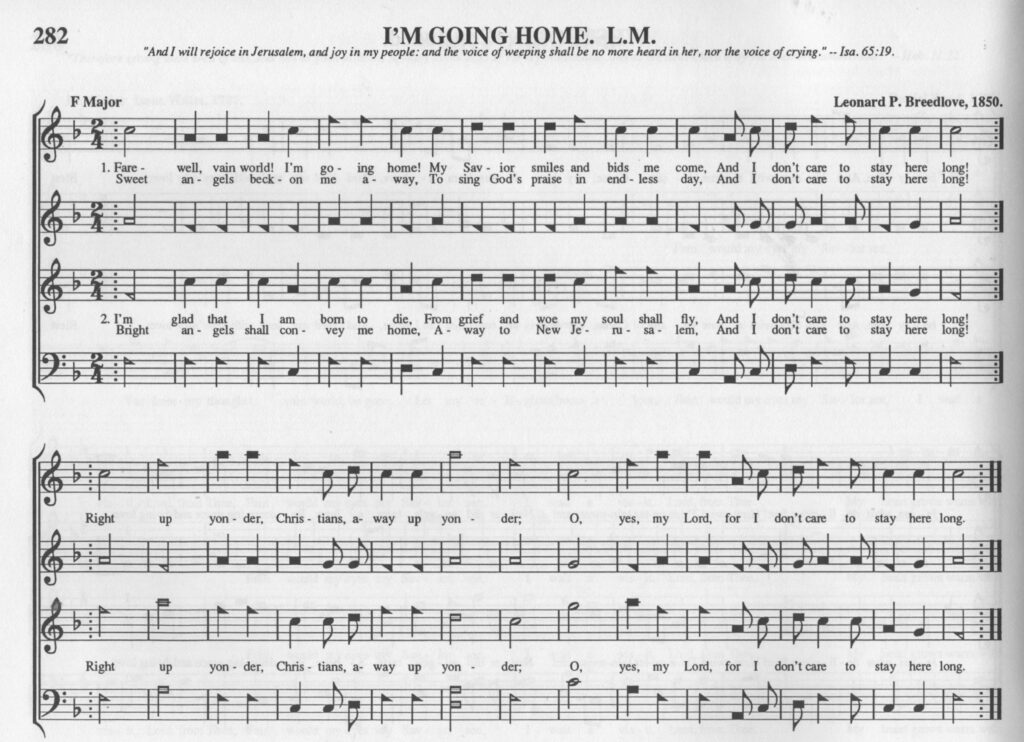Sacred Harp, I’m Going Home
 For Thanksgiving, I have selected music that is quintessentially American. Of course, the Shape-Note singing tradition did not spring up spontaneously in America. It draws on various older traditions. But the style that survives (and thrives) today developed in American circumstances. It has its most significant roots in 18th-century New England and, in particular, William Billings’ The New England Psalm Singer published in 1770.
For Thanksgiving, I have selected music that is quintessentially American. Of course, the Shape-Note singing tradition did not spring up spontaneously in America. It draws on various older traditions. But the style that survives (and thrives) today developed in American circumstances. It has its most significant roots in 18th-century New England and, in particular, William Billings’ The New England Psalm Singer published in 1770.
Shape-note notation came along in 1801 with publication of The Easy Instructor by William Smith and William Little. The distinctive shapes of the notes indicate pitch or, more specifically, the syllable assigned each pitch under a modified solfege system (do re mi). The shapes indicate scale degrees rather than absolute pitches, (the shapes and syllables move to conform to the key), and so it facilitates a singer’s ability to hear scale degrees—a critical skill. So although the system has always seemed somewhat redundant to me, it apparently gave many amateur singers a leg up in reading music.
Those of you who like to mix law with music history can read about the ensuing litigation initiated in 1803 by Andrew Law. Law claimed that the Smith and Little system was copied from his, although theirs had been published first.
Itinerant singing masters traveled across New England and spread to the South and Midwest teaching this form of singing and selling the books. The Sacred Harp (published in 1844) collected many of the shape-note tunes and soon became the standard source.
Shape-note singing opportunities can be found across the U.S. You can search for a local group at fasola.org. It’s fun, vibrant, open to everybody, and filled with enthusiasm. The sound quality may surprise you with its raw energy.
The session captured in the video below, however, comes from Ireland. You will hear them following the standard procedure of singing through the entire hymn first with the solfege syllables and then a second time with the text. It is also standard form to sit in a square arranged according to the four voice parts. Our Exploring America’s Musical Heritage has a significant segment on shape-note singing filmed in Fort Worth, and everything about this Irish group conforms to what you would experience in Texas, or Ohio, or Vermont.




